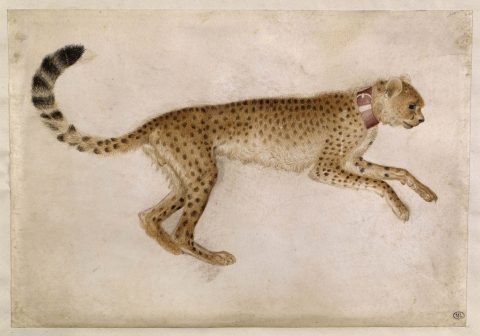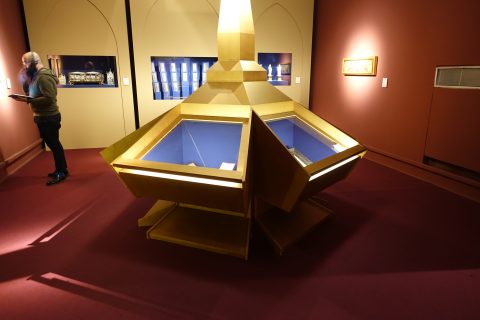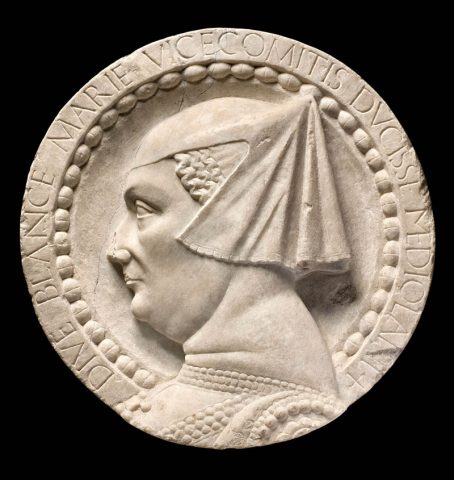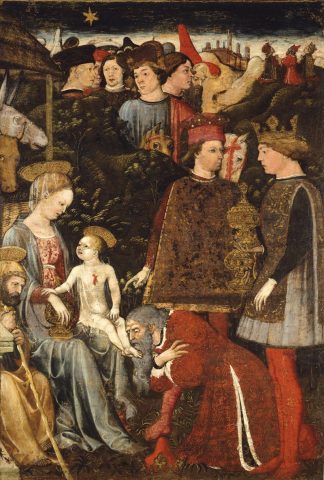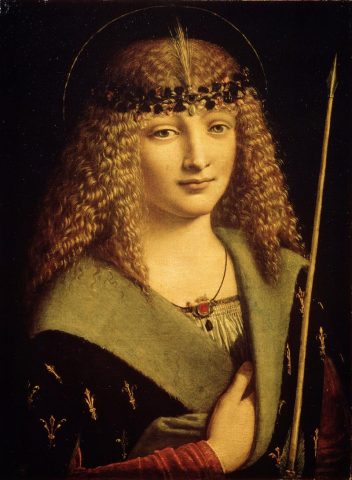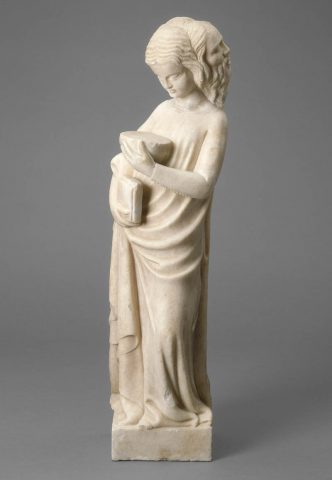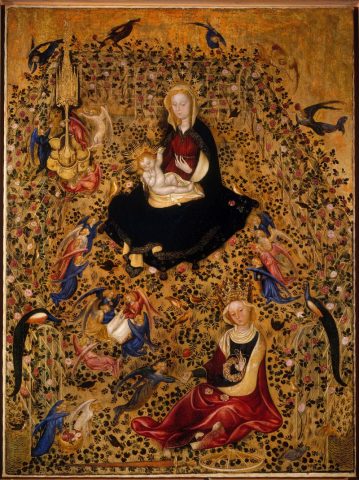Dai Visconti agli Sforza, Roberto Longhi re-loaded: but where did he fail?
- Michelino da Besozzo, Cheetah, pencil on paper; 16 x 23 cm Paris, Musée du Louvre, Département des Arts graphiques.
- “Arte lombarda dai Visconti agli Sforza”, installation view, Palazzo Reale, Milan.
- Lombard artist, Bianca Maria Visconti (1460-1480), marble, Milano, Raccolte d’Arte Antica, Museo d’Arte Antica del Castello Sforzesco.
- Bonifacio Bembo, The Adoration of the Magi, oil on board, Denver Art Museum.
- Giovanni Antonio Boltraffio, Portrait of a Youth as Saint Sebastian, c. 1500, found in the collection of the State A Pushkin Museum of Fine Arts, Moscow.
- Bonino da Campione, Prudence, c. 1357, marble, Samuel H. Kress Collection.
- Michelino da Besozzo (doc. 1388-1450), attr., Madonna of the Rose Garden, Verona, Museo di Castelvecchio.
Among the recent victims, or maybe the chosen ones, of what we may call the-re-enacted-reality-pattern we ought to add the last main exhibition curated by art historian Roberto Longhi, “Arte Lombarda dai Visconti agli Sforza”. Art lovers, scholars, as well as the international public coming to Milan to visit the Expo, will indeed have the unique occasion to admire not only the most extensive exhibition of Leonardo’s drawings ever made (at Palazzo Reale until 19 July), but also to meet in flesh the extraordinary collection of paintings, sculptures, jewels, books and documents gathered together by Longhi and Alberto Dall’Acqua in 1958 to describe and promote that golden age of Lombard art, to which Leonardo himself took part (also at Palazzo Reale until 28 June).
Different from the approach adopted in 2013 by Fondazione Prada’s curators re-enacting in Venice Harald Szeemann’s “When attitudes become form”, the team working on “Arte Lombarda” re-loaded had at its disposal the same location where the original version took place. Nevertheless they preferred to design a new setting, which seems opposite to the minimal and up-to-date one conceived by Ferdinando Reggiori, Attilio Rossi and Francesco Wildt in the Fifties. Thus, no more white walls and plinths made of bricks – documented at the end of the current show by a series of photographs – but grey cases embracing sculptures and some invasive structures a bit too theatrical even for a pop-art nostalgic. But this is really the only disputable element of an extremely engaging project.
Effectively, just like the show re-enacted in Venice, also this exhibition has more than a positive effect. As, for instance, that of making the visitor wonder how similar the post-crisis period that Milan and Lombardy are now experiencing – which could still be just an illusion due the Expo mood and BCE’s quantitative easing – is to the post-war recovery process that was at the very basis of the Italian art historians’ studies at the end of the Fifties. Or, it could also make you realize how similar the aristocratic society that made these artworks possible is to the 0,01% part of the world population that today can promote art and culture, and that could ideally keep wild animals in the garden, like those described by the rare “Bestiario” recently attributed to Michelino da Besozzo.
But along with the couple of pleasant thoughts this show induces, it also poses a main question. As curators Mauro Natale and Serena Romano report in their introductory writing, in 1958 Longhi’s exhibition was in fact a rediscovery of a main corpus of Italian art, a corpus largely unknown by the audience, both national and international, and certainly still undervalued – according to Longhi himself – if compared to the art produced in Tuscany and Rome. The problem is that that rediscovery still sounds the same way, thus a mere rediscovery, and apparently general public still doesn’t know much about Bergognone, Foppa, Zenale, Michelino da Besozzo, or Paroto, just to name some of the main masters. On the contrary, they perfectly know Leonardo and still prefer to queue for this latter instead of visiting the queue-free and certainly more stimulating “Arte Lombarda”. What happened in the meantime that is keeping the audience, and the particularly the international audience, still largely unaware of that extraordinary art production? Where did Longhi, or actually Italy, failed?
June 3, 2015

